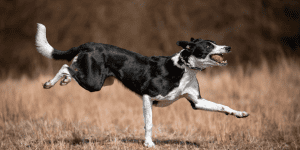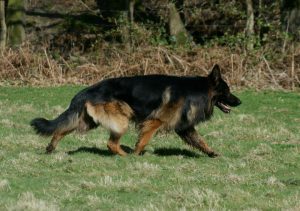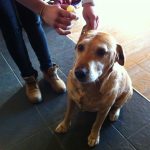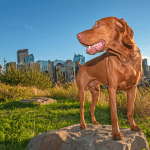Canine Movement.
While there are many different shapes of dogs – and some move in different ways – all have the same bone structure and angulation, in order for them to move efficiently. Read our Holidays4Dogs article for fascinating information on canine movement.
The overall appearance of the individual dog must be symmetrical and proportioned correctly to other parts of the body. Angulation generally refers to the bones at the front and the rear of the dog – in particular, the angles at the hip and shoulder joints. Without correct balance and angulation, a dog will move less efficiently. As a consequence he, or she, may suffer more injuries throughout life.
When describing movement, (walking, or running ) we call this the ‘gait’. This is the pattern of movement in all animals during locomotion. Many people compare the gait of dogs to horses, but dogs have quite a unique gait.
This is the pattern of movement in all animals during locomotion. Many people compare the gait of dogs to horses, but dogs have quite a unique gait.
Dogs have much more flexibility in their spines than horses. They are also much better at turning tight corners and changing direction, because they have more traction in their paws.
In the world of competition dogs such as agility, sled dog racing, or obedience, there is a growing interest in the way dogs move. This is because canine movement impacts very much on a dog’s health.
Dogs that move correctly, shifting efficiently between gaits, will perform better. In addition, they will be much less likely to suffer injuries. There main gaits of the dog are, – walk, trot, canter and gallop. The dog can also move at an amble, or at a pace when transitioning from one main gait to the next.
Walk
When a dog walks, he moves one rear leg forward followed by the front leg on the same side. Sometimes the dog will have only two feet on the ground at the same time.
Trot
Dogs love to trot. This gait is the most efficient way for a dog to get around and a fit dog can cover long distances trotting. The desire to trot is often the reason why dogs pull on the lead.
In relation to canine movement, a dog’s natural pace when getting around is much faster than ours. Therefore, walking at human pace can feel unnatural. In the trot, the dog moves using his diagonal front and rear legs, leaving his body momentarily suspended in mid-air.
Canter
There are two ways a dog will canter. The first is in the same way a horse would canter. The dog moves forward with one rear foot, then the other rear foot moves at the same time as the diagonal front foot, after which the final front foot moves. The other variation of the dog’s canter is known as the rotary canter – this is where the feet will move right rear, left rear, left front, and right front.
The rotary canter is the most frequently used gait in canines and is seen most frequently in performance dogs such as those competing in agility. Dogs engaging in a rotary canter can make fast turns and drive forward effectively from the rear.
Gallop
The gallop begins with both the dog’s rear feet on the ground, with one foot slightly ahead of the other.
He then stretches his back and body forward with his front feet outstretched. One front foot will hit the ground a little before the other.
Then the dog will use his back to spring the rear feet forward again. As with the canter, there are two variations of gallop – the classical gallop, seen in horses and the rotary gallop generally seen in canine movement.
Getting into a natural stride.
It should be noted that the way a dog is walked on a lead can contribute to a dog’s gait.
Owners that put pressure on the dog by pulling on the neck collar, or even a harness, can unbalance the dog.
In addition, some harnesses reduce the dog’s movement – particularly in terms of shoulder extension. Therefore, take time to train your dog to walk on a loose lead and make sure any harnesses fit correctly and don’t hamper the dog’s movement.
Other signs to watch out for are, lowering of the head and arching of the back. This can often happen as the dog is attempting to compensate for his balance when feeling pain in his forelimbs. If the dog has pain or discomfort, you may notice he drops his pelvis, or tilts it to the side. Intermittent skips, or a gait that looks as if the dog is ‘bunny hopping’, can also be signs of skeletal dysfunction.
Conclusion.
Observing canine movement is an important aspect of dog ownership. It is important to become accustomed to your dog’s natural gait, as you can then detect when something might be wrong. The trot is the gait in which it is often easier to see any faults in the dog’s movement. This is why the trot is most frequently employed in the world of show dogs.
If the dog is lame, in pain or injured, he will tend to avoid putting weight on the affected limb and this can usually be noticed quite clearly. If you are concerned your dog is moving awkwardly, or appears to be in pain it is important to seek veterinary attention.



